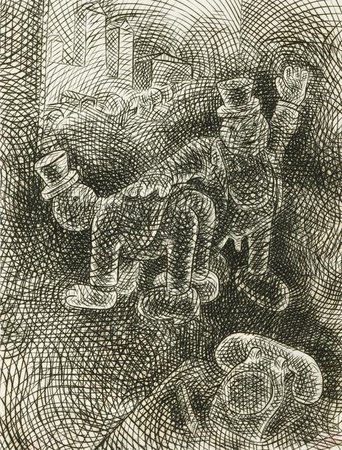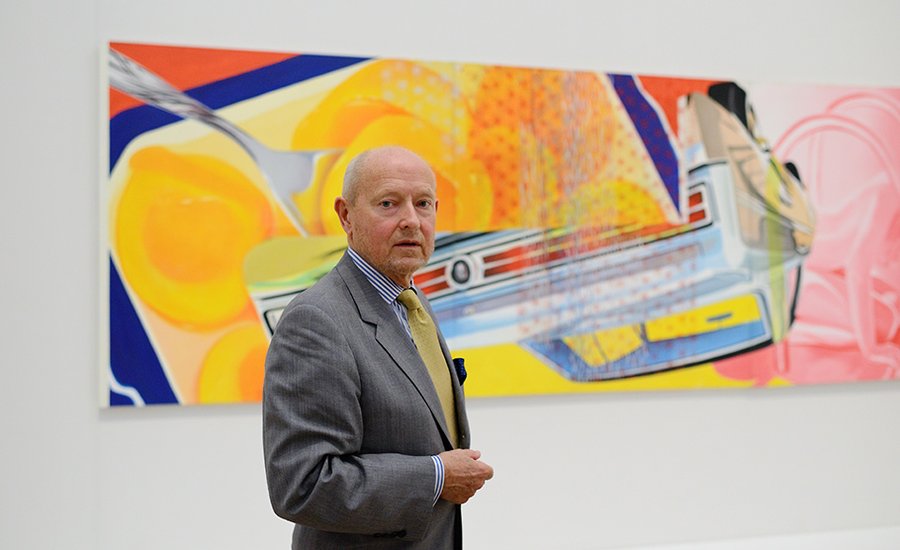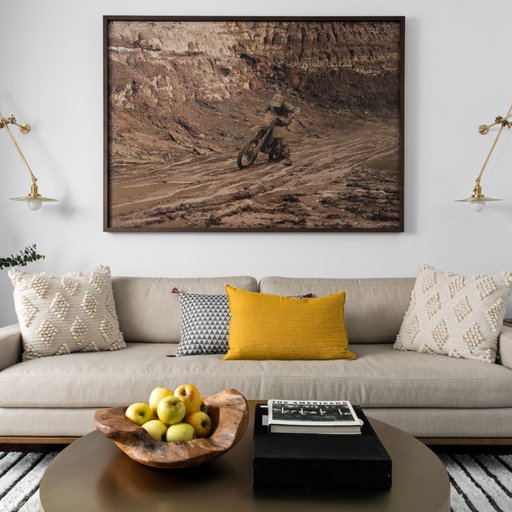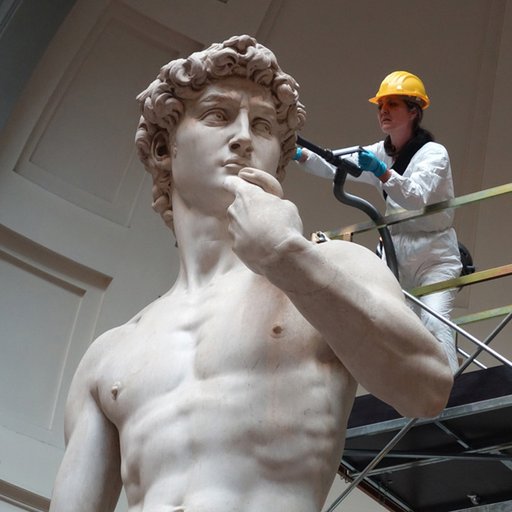This is not your first time at the rodeo. Oh, wait, perhaps it is.
If you’ve made the decision to take the plunge and buy art, congratulations. As you’re likely overwhelmed, we asked art dealers, auction-house officials, and collectors to suggest strategies for picking “entry points”—relatively inexpensive ways to collect pieces by name artists, or by lesser-known artists of good repute (or with a cult following), in various schools and movements of art.
We got an earful. The resounding message was, as summed up by AcquavellaGallery director Michael Findlay, is that it’s always better to buy a great example of something by a not-quite-superstar, or a work that’s been overlooked due to its subject matter, than to buy a bad “autograph”—a work that has mostly the artist’s fame to recommend it.
Look for the Cults, the Teachers of the Great Artists, the Formative Scenes of Art History
When I advise entry-level collectors, says Dan Lienau, director of the Annex Galleries in Santa Rosa, California, “I suggest looking at the incredible array of printmakers who worked at Stanley William Hayter’s Atelier 17 in Paris and New York” in the 1930s-'50s. The subject of a current show at the Philadelphia Museum of Art, “Breaking Ground: Printmaking in the US," with other museum shows in the works, “they influenced every printmaker working today,” he says.
Hayter, first a Surrealist and later working in abstraction, founded the Atelier in Europe and then moved it to New York. Hundreds of artists went through Atelier 17, according to Lienau, “from the big names like Miró, Picasso, Motherwell—who were there and did their own printing at this point, they didn’t just come in to sign the prints—to the teachers who went on to found printmaking departments in universities” throughout the world. A color etching by Hayter himself might sell for as little as $1,500.
ARTSPACE RECOMMENDS:
Joan Miro's Montagnards III (Les) (Catalogue raisonné, Dupin 1229), 1975-1990
Fill in the (Female) Blanks in Art History
MoMA didn’t buy many works by women artists early in the last century, but in 1946 the institution purchased Liquor Store Window by the charmingly named Fannie Hillsmith. Many pioneering women artists are being given a second look as art history is re-sifted with less of gender bias, and Hillsmith is certainly one of the artists being reconsidered, having shown early in her career at Peggy Guggenheim’s legendary Art of This Century Gallery, and with the influential dealer Sydney Janis. An American Cubist from New Hampshire, later in life she taught at Cornell and could count critic Clement Greenberg as a fan. New York’s Susan Teller gallery carries circa-1940’s drawings by the artist for less than $1,000.
ARTSPACE RECOMMENDS:
Choose a Lesser-Known—But Not Uncharacteristic—Work by a Great Artist
Albrecht Dürer was the leading figure of Late Gothic and High Renaissance German art, and “he remains after 500 years—like Rembrandt, Goya, and Picasso—one of the superior masters of printmaking,” says New York dealer Pia Gallo. Dürer’s engravings, particularly his three Meisterstiche (“master engravings”) Knight, Death, and the Devil; Melencolia I; and St. Jerome in His Study, have been collected for centuries, adds Gallo. And it’s the case that almost every major art museum has an impression of at least one of his three best-known prints.
“But to purchase an early impression of any of Dürer’s three master engravings in very good condition would cost hundreds of thousands of dollars today,” says Gallo. Dürer’s St Paul had been engraved the same year, maintaining the same level of technical virtuosity, imagination, and skill. A very fine early impression can be acquired for less than $10,000.” The lesson here applies to contemporary art as well, such as with the much-lauded but still lower-priced photography of Ed Ruscha.
ARTSPACE RECOMMENDS:
Ed Ruscha's Little Mexican Church on a Windowsill, 1970/2007
Don’t Be Scared Off If the Artist Is Already Too Expensive for You; Have a Strategy
If you can’t afford a work you like, keep an eye on the artist. His or her work may show up elsewhere, says New York collector Emily Rubin, who owns small works by Tom Otterness, among other artists.
Other experts advise that, if money is a concern, don’t make your first art purchase at a live auction, where bidding fever can kick in, and where estimates already reflect secondary-market prices.
ARTSPACE RECOMMENDS:

Tom Otterness's Spanking, 1994
Look to Museums for Clues
One of the most buzzed-about public art installations of recent years (or at least outdoor-art installations) currently sits atop the Metropolitan Museum of Art: Transitional Object (Psycho Barn) by Cornelia Parker. Her recreation of the spooky film set from the 1960 Hitchcock movie prompts London’s Alan Cristea, of the gallery that bears his name, to suggest works by the artist. Her 2015 print series, “one day this glass will break,” in small editions of 15, cost about $3,700 apiece.
ARTSPACE RECOMMENDS:

Cornelia Parker's Beautiful Glass (Broken), 2015
Look West
As the West Coast scene becomes more influential in the art world, so does its history.
Senior advises collectors to bet on Bruce Conner. “An iconic figure and influential artist on the West Coast and beyond, he’ll be the subject of a traveling retrospective” organized by SFMoMA and opening at the Museum of Modern Art in July, she says.
While Conner’s drawings can easily reach $50,000 his "#100" prints series, published by the artist in 1971 and “relating to the felt-tip drawings he was making at the time,” are “very accessibly priced.”
ARTSPACE RECOMMENDS:

Ken Price’s Figurine Cup I (from the Figurine Cup series), 1970
Buy Work by Artists Trying to Say Something Timely and Important—Especially If Important People Are Listening
Art with passion and politics is rarely dismissed as decorative. Barack Obama collects work by Glenn Ligon. Why not you?
“Glenn Ligon’s paintings, drawings, prints and sculpture explore cultural and social identity and draw freely from literary and pop-cultural sources,” notes Betsy Senior, founder and director of New York veteran print shop Shopmaker and Senior.
The pick: His text-based etchings. “Phrases are repeated until eventually dissipating into obscurity. Smudged and broken type interferes with legibility, suggesting the viewer’s liberal and intellectual struggle to read the [text] and understand its implications.”
ARTSPACE RECOMMENDS:

Glenn Ligon’s Warm Broad Glow (Reversed), 2008
Find 20th-Century Artists Likely to Remain in the Art History Books, and Buy Their Current or Late Works
Late works are almost always cheaper than ones done in what is considered to be the artist’s prime, sometimes for good reason. The artist may be repeating his or her own ideas, or producing work with less skill and energy.
But once an artist is firmly in the canon, scholars start looking at the whole career, and late works by Picasso, Matisse, and de Kooning are now embraced.
A pick: Andrew Witkin, director of the Barbara Krakow gallery, notes that 1990s prints by Sol LeWitt and Bob Mangold, “iconic within their work,” are available for in the low thousands.
ARTSPACE RECOMMENDS:

Robert Mangold’s Dancespace, 1990
Finally: Do Your Research If You Want to Find Deals
Findlay, the director of Acquavella Gallery, is experienced in selling eight-figure art but reels off a host of “cheap” works he found when he was researching his upcoming book on collecting art, including "small paper sculptures by Isama Noguchi and Polaroids by Tina Barney for under $100; sculpture by Rebecca Warren and good prints by Max Ernst, Jean Dubuffet, and John Baldessari in the $250-$1,000 range.”
There were “under $5,000, small paintings by Ray Parker, Christo collages, and multiples by Jean Arp; under $10,000, a unique wall relief sculpture from 1969 by Gerald Laing, granite sculpture by Brazilian Iran do Espiritu Santo, and photographs by Jim Naughton, paintings by Jules Olitski, and Leon Golub. Obviously you are not going to get large major works but you can get good examples, not atypical.”
He concludes that, even without a lot of money, “You can collect art.”
ARTSPACE RECOMMENDS:















![Ed Ruscha's Little Mexican Church on a Windowsill [2007 NYABF Fundraising Edition], 1970/2007 Ed Ruscha's Little Mexican Church on a Windowsill [2007 NYABF Fundraising Edition], 1970/2007](http://d5wt70d4gnm1t.cloudfront.net/media/a-s/articles/1949-655885912868/entry-points-expert-strategies-for-making-your-first-art-buy-900x450.jpg)















